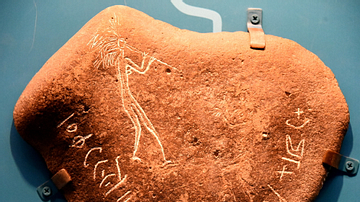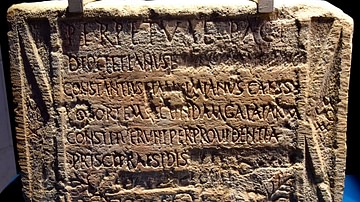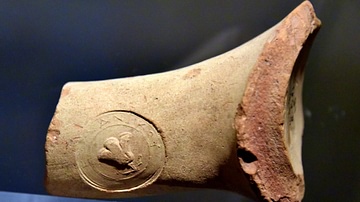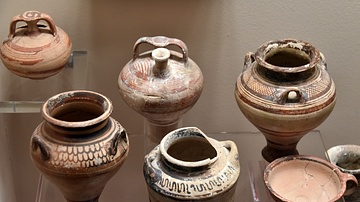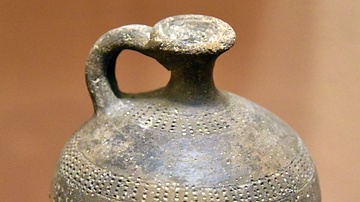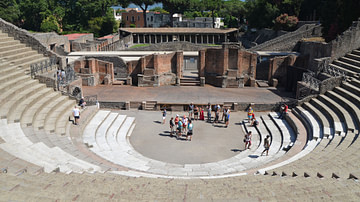Illustration
This is a stone slab incised with a repeated array of concentric irregular squares. A line of 3 slabs bearing this decoration was found in a wall inside "Structure 2" at Wadi al-Hammeh 27. They were supported by a backing of rubble, with their decorated sides facing southeast. The slabs had been exposed to fire, which caused the limestone to crack and fracture. The three slabs constitute a sculpted piece of about 1.55 meter in length. This is the central slab; the other two end slabs are at the Dar as-Saraya Museum in Irbis (Jordan) and the National Gallery of Australia in Canberra. Other than being the earliest known large-scale sculpted piece in the Levant, this is one of the best examples of non-figurative Natufian art. Natufian period, around 12000 BCE. From Wadi al-Hammeh 27, Northern Jordan Valley, Jordan. The Jordan Museu, Amman, Jordan).
About the Author
Cite This Work
APA Style
Amin, O. S. M. (2019, February 18). Oldest Large-Scale Slab in the Levant. World History Encyclopedia. Retrieved from https://www.worldhistory.org/image/10050/oldest-large-scale-slab-in-the-levant/
Chicago Style
Amin, Osama Shukir Muhammed. "Oldest Large-Scale Slab in the Levant." World History Encyclopedia. Last modified February 18, 2019. https://www.worldhistory.org/image/10050/oldest-large-scale-slab-in-the-levant/.
MLA Style
Amin, Osama Shukir Muhammed. "Oldest Large-Scale Slab in the Levant." World History Encyclopedia. World History Encyclopedia, 18 Feb 2019, https://www.worldhistory.org/image/10050/oldest-large-scale-slab-in-the-levant/. Web. 16 Apr 2025.



